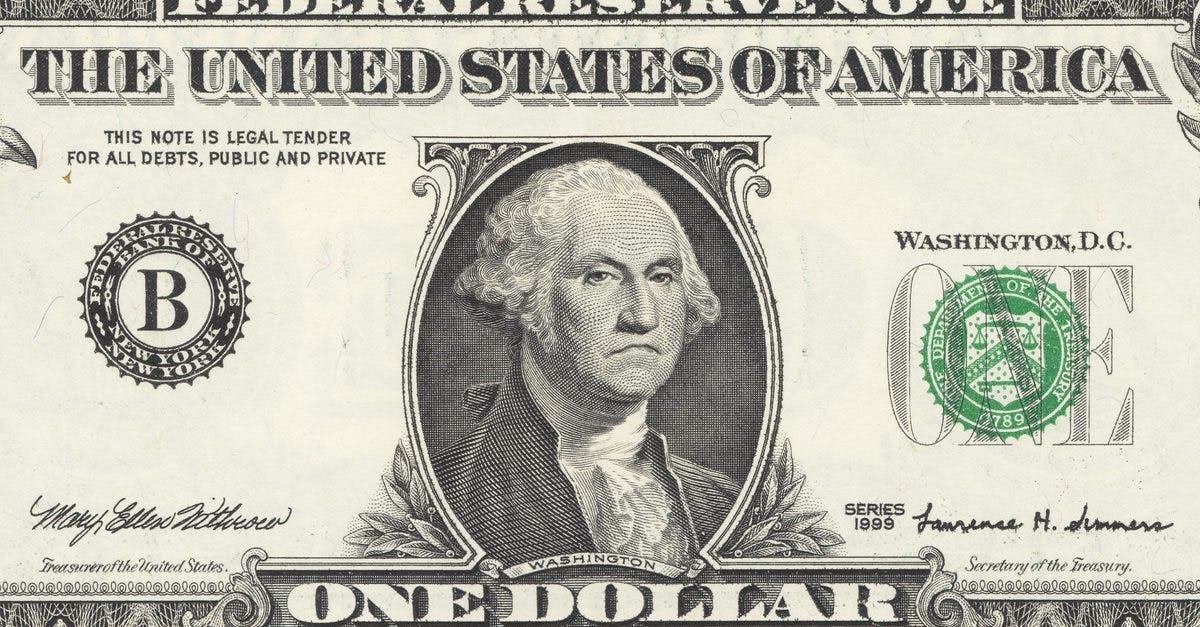Our Monetary System is Broken
America has succumbed to Triffin’s Dilemma by running massive trade deficits with producing countries like China and India, where many once-American middle-class jobs now also reside.

Source: Shutterstock
key takeaways
- Today’s system was designed in 1944 and collapsed in 1971. Yet we’re still using some version of it.
- Nothing about this system makes much sense and it most benefits those at the top – those who are closest to the creation of new currency.
For 50 years, the global economic and financial system has been operating based on a fiat version of the old Bretton Woods system. That system was designed in 1944 and collapsed in 1971. Yet we’re still using some version of it.
America has succumbed to Triffin’s Dilemma by running massive trade deficits with producing countries like China and India, where many once-American middle-class jobs now also reside.
Nothing about this system makes much sense and it most benefits those at the top – those who are closest to the creation of new currency.
In what’s known as “The Cantillon Effect,” people who find themselves in a position to reap the benefits of money printing first wind up accumulating almost all of the wealth. By the time newly printed money reaches the masses (assuming it ever does), the currency has already depreciated, making the average person poorer still. We see a prime example of this today in an era of unprecedented monetary and fiscal stimulus, with people receiving direct fiat payments, yet homelessness continues to spiral out of control.
The Cantillon Effect might be a key reason that income inequality has reached record levels in the US and around the world. While bankers create trillions of new currency units out of thin air and give it to their friends, the masses find their wages lagging behind the pace of inflation to a significant and ever-increasing degree.
Wage stagnation
Just how bad have wages stagnated over the last 50 years? The answer can be found by looking at wages in terms of gold.
Keith Weiner did an excellent job of doing just that in 2013 in a piece for Forbes. He pointed out that in terms of gold, wages have fallen by at least 87% over the past 55 years. The math is simple.
In 1965, minimum wage amounted to about 71 ounces of gold per year. In 2011, an educated worker like an engineer earned about 63 ounces of gold per year. By this metric, it becomes apparent that today’s highly-skilled workers often earn less (in terms of purchasing power as measured in ounces of gold) than the minimum wage earners of just two or three generations ago.
Also consider the fact that the price of gold in USD terms at the time of this writing is higher than it was in 2011, many consumer costs have risen further still, and real wages in USD terms have not kept pace.
In other words, the situation has only gotten worse over the last decade.
In this light, it becomes clear that after taking the dollar off of the gold standard, the American standard of living has been spiraling downward at a staggering rate.
A no-win scenario
What’s more, citizens of many nations outside of the US are often made to disproportionately suffer the consequences of central bank money printing. In recent years, we have seen historic currency collapses in numerous nations across South America, Africa and parts of Eastern Europe.
The current system also gives extraordinary influence to the American empire. The USD can be weaponized through sanctions and other methods to bend smaller nation-states to the will of the US government. After all, the dollar is “backed by men with guns,” in the words of Paul Krugman. Most of the world likely sees this system as unfair, and a large portion of Americans who understand the system tend to think it isn’t right.
Thankfully, over the last 12 years, a solution has emerged. We now have the potential to create a new monetary system based on open access, equality, peace and prosperity. The new system will be backed by code and economic incentives, not men with guns.
Now is the time for a new Bretton Woods.
This article is part 4 in a 5-part series about Bretton Woods. Blockworks will be hosting a new Bretton Woods summit in the same location, 50 years later. Find out more about the conference and apply to attend today.





